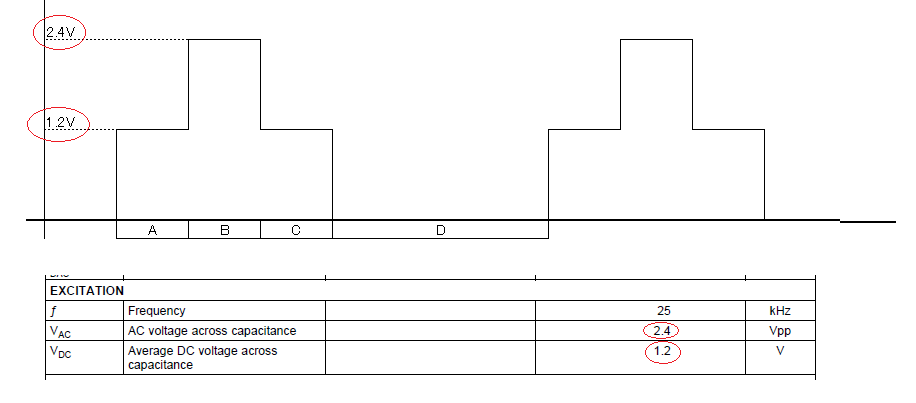Dear Technical suport Team,
I have more questions about FDC1004.
1.)
Shield and Cin are following waveform when customer scope it.
Could you please teach what behavior from "A" to "D" ?
I'd like to know behavior of each stage.
I think that from "A" to "C" means charging and "D" means that FDC1004 draws a charge.
But if it is correct operation, I don't know why it has 2step behavior(1.2V stage and 2.4V stage).
2.)
Currently, shield layer capacitance may be over 400pF.
So it seems that shield doesn't effect.
Do you have any idea to improve it?
One of idea, how is driving shield with OPAMP?
If you already have investigated it, could you tell me what OPAMP you used for?
I am searching OPAMP(voltage follower=Gain 0dB) that can drive around 1000pF.
Best Regards,
y.i


